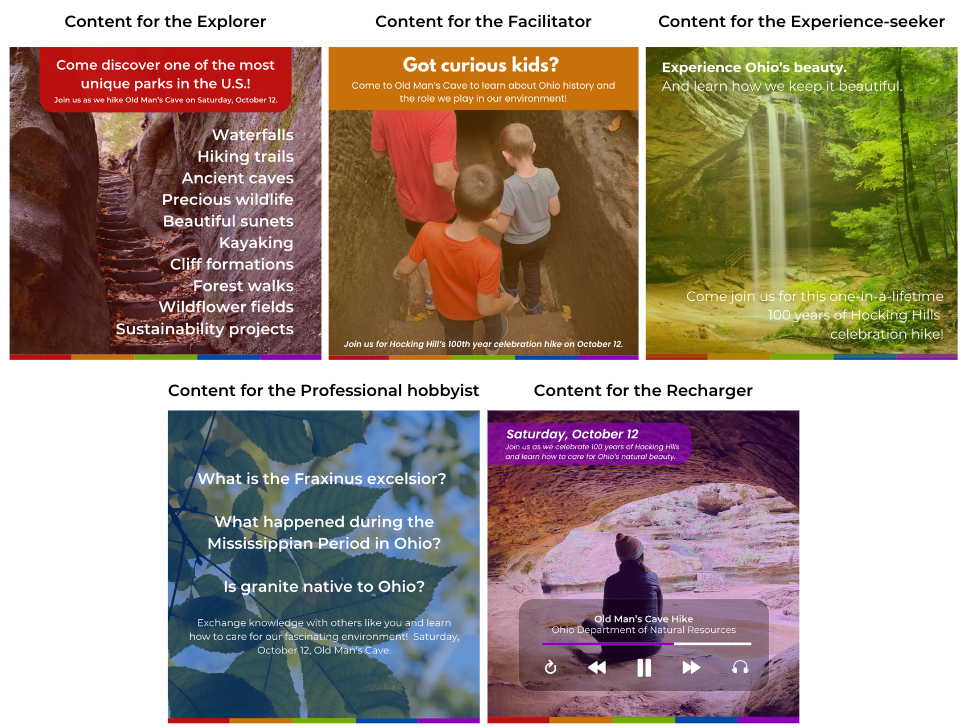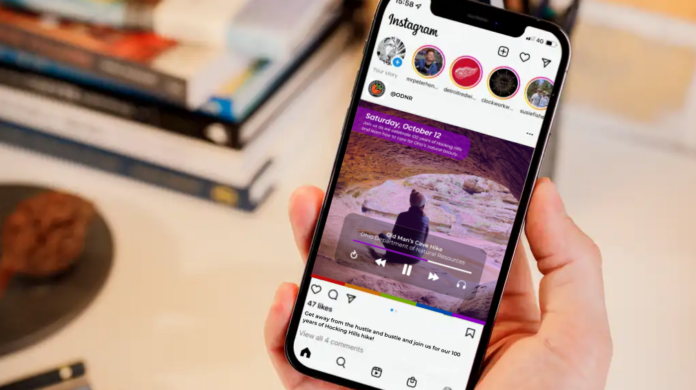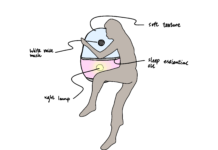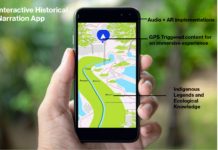In my lit review titled “Visitor archetypes as a management tool: What makes a visit worthwhile?” I discussed John H. Falk’s five visitor archetypes. Museums often use these archetypes to gauge how they can best serve their diverse audiences. I propose that ODNR as a cultural, social, and historical institution also use these archetypes in their marketing model. Though ODNR is not a museum-based institution, their work running sites across Ohio mirrors the responsibilities of museum managers as they run visitors centers, public parks, host events, etc..
The five archetypes—Explorers, Facilitators, Experience seekers, Professional hobbyists, and Rechargers—are certainly relevant at ODNR sites, in fact in our meetings with our ODNR partners, they hinted that they recognize different categories of visitors. If ODNR were to implement Falk’s archetypes in their management, it could have an effect on branches throughout the organization. For example, in marketing, Falk’s archetypes may manifest as a tool used to target certain demographics on social media. ODNR’s marketing department could produce multiple different posts for the same major event, each highlighting a different aspect of it to appeal to each of the five categories. This way, ODNR could encourage people to act sustainably in a way that fits their unique identity, instead of trying to encourage all visitors to act the same.

Of course this idea is imperfect. Personalizing information at such a niche level raises all sorts of challenges, like what happens if a person varies from archetype to archetype? Will ODNR need additional resources to produce content in five different voices? Perhaps, a better solution would be to categorize events into the five categories and create marketing material to promote it to the most relevant archetypes. For example, a nature hike might appeal to the Explorer, Recharger, and Facilitator but less so to the Experience-seeker and the Professional hobbyist. Perhaps instead of trying convince the Experience-seeker and Professional hobbyist that they want to go on this hike to learn about how to care for the natural world, they could just be targeted in marketing material for a different event, like a reatreat in the parks, and at that retreat there could be discussions about sustainable practice.
This idea requires a lot of creative thinking, but in the end, trying to imagine the different voices needed to appeal to these audiences in general could be helpful. In my eyes, it makes it easier to recognize that different people need different types of motivation.




